Fishes
Media
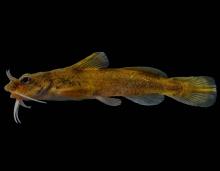
Species Types
Scientific Name
Noturus eleutherus
Description
The mountain madtom is rare and endangered in Missouri. This small catfish has been recorded from only a few locations in the southeastern portion of the state.
Media
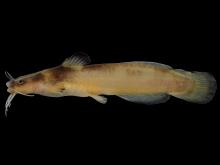
Species Types
Scientific Name
Noturus exilis
Description
The slender madtom is the most common madtom in the western and northern Missouri Ozarks, in small and medium-sized streams that have gravel bottoms, clear water, and permanent flow. It is scarce in the southern Ozarks.
Media
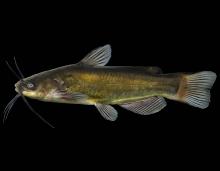
Species Types
Scientific Name
Ameiurus melas
Description
The black bullhead is widespread in Missouri. It is the most common bullhead catfish in north and west portions of the state. It has dusky or black chin barbels, and the edge of its tail fin is notched, not straight.
Media

Species Types
Scientific Name
Esox americanus vermiculatus
Description
The grass pickerel is the most common and widely distributed pike in Missouri. It is also the smallest, seldom exceeding 10 or 12 inches in length.
Media
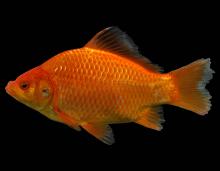
Species Types
Scientific Name
Carassius auratus
Description
Goldfish are not native to North America. They often escape into the wild from bait buckets and other causes, but there are few self-sustaining populations in Missouri.
Media

Species Types
Scientific Name
Ctenopharyngodon idella
Description
Grass carp are large-bodied with a broad head and a terminal transverse mouth. The scales appear crosshatched. A native of east Asia, it is now widely distributed in the Missouri, Mississippi, and St. Francis rivers and in impoundments.
Media

Species Types
Scientific Name
Hypophthalmichthys molitrix
Description
The silver carp is an invasive, nonnative fish. It is illegal to use it as live bait. Do not collect, transport, or dump it. It's related to the bighead carp, but its head is smaller and the eyes higher. The keel extends up to the base of the pectoral fins.
Media
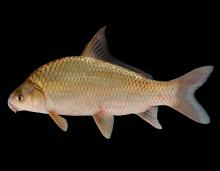
Species Types
Scientific Name
Carpiodes carpio
Description
The river carpsucker has a silvery, deep, rather thick body, a long, sickle-shaped dorsal fin, and whitish lower fins. It is the most abundant and widely distributed carpsucker in Missouri.
Media
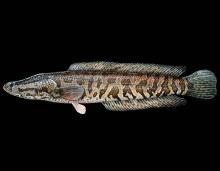
Species Types
Scientific Name
Channa argus and other Channa and Parachanna spp.
Description
Snakeheads are native to Asia and invasive in America. They resemble bowfins and can live in similar habitats. Note the extended anal fin and the pelvic fins located close to the pectoral fins and gills.
Media
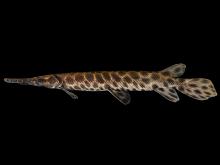
Species Types
Scientific Name
Lepisosteus oculatus
Description
The spotted gar has many well-defined roundish black spots on top of the head and on the paired fins. Like other gars, it's a long, cylindrical fish with a long snout and numerous prominent teeth. The body is covered with hard, diamond-shaped scales.
See Also


Media

Species Types
Scientific Name
Amphiuma tridactylum
Description
The three-toed amphiuma is an eel-like, completely aquatic salamander. It has very small forelimbs and hind limbs, each with three tiny toes. In Missouri it’s found only in the Bootheel region.
Media

Species Types
Scientific Name
Siren intermedia nettingi
Description
The western lesser siren is an eel-like, aquatic salamander with external gills, small eyes, small forelimbs with four toes, and no hind limbs. In Missouri, it’s found mostly in the Bootheel and northward in counties near the Mississippi River.
About Fishes in Missouri
Missouri has more than 200 kinds of fish, more than are found in most neighboring states. Fishes live in water, breathe with gills, and have fins instead of legs. Most are covered with scales. Most fish in Missouri “look” like fish and could never be confused with anything else. True, lampreys and eels have snakelike bodies — but they also have fins and smooth, slimy skin, which snakes do not.





















